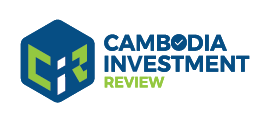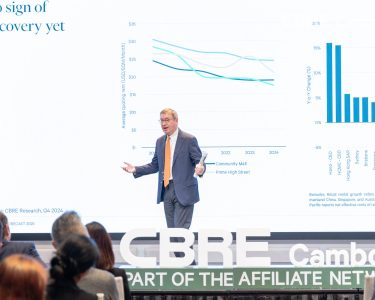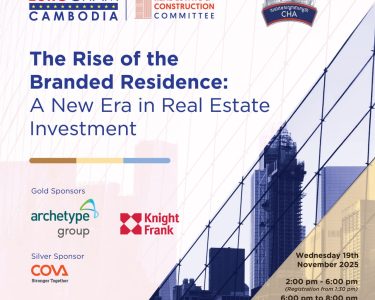Vijian Paramasivam
The Cambodian real estate sector, once a bastion of the country’s economic growth, is grappling with a slew of issues that have left it bereft of its former vigor. A significant mismatch between supply and demand, coupled with external factors have caused the industry to lose its previous growth momentum. The situation calls for a rethink, say experts in the field, notably Marc Townsend, Chairman of CBRE Cambodia, and Lawrence Lennon, Managing Director of CBRE Cambodia.
In a media briefing, Townsend drew a comprehensive picture of the real estate landscape, stating that Cambodia is currently at an “interesting but challenging stage.” He commented that, rental rates are in a free-fall, and there’s a stark imbalance between the supply and demand of commercial spaces. “There’s an oversupply of office and rental space in the country. The credit market is tightening up, and landlords are increasingly finding it hard to attract tenants. Even existing tenants are negotiating for more rent-free space,” he elaborated.
The Absence of Major Foreign Investments in Cambodia
Townsend spotlighted the absence of major foreign investments as one of the root causes of this current situation. Drawing a parallel with Vietnam, he mentioned how the 2008 entry of South Korean electronics giant Samsung changed the real estate dynamics in that country. “Cambodia is missing a transformative investor like Samsung, which not only invigorated Vietnam’s property market but also drastically altered its economic landscape. The question now is, how do we attract such an investor to change Cambodias economic narrative? Townsend pondered.

Adding depth to the scenario, the Chairman cited data from CBRE’s Mid-Year Review 2023 report. “Currently, 22% of the 298 ongoing real estate projects in Cambodia are on hold. Over 150 condominium projects have unsold inventory. The sector is bleeding, and unless we act fast, the situation could worsen,” he warned.
Townsend also gave a sector-specific analysis, cautioning that the office and retail space segment is most likely to experience significant headwinds in the coming months. However, he was more optimistic about the residential sector. “Residential developers are offering better financing options and deals. So, in the medium term, the residential segment could be a silver lining,” he said.
His recommendations for improvement focused heavily on the need to shift from luxury to affordability. “Luxury properties might look lucrative in terms of profit margins, but they don’t meet the real needs of Cambodia. What we need are affordable homes for young families, supplemented with quality schools, healthcare facilities, and other amenities,” Townsend urged.
Fundamental Change for Phnom Penh’s Real Estate Sector
Lawrence Lennon, Managing Director of CBRE Cambodia, also addressed the state of the sector. He provided stark figures, indicating the decline in occupancy rates. In 2019, we saw about 500,000 square meters of office space in Cambodia with 90% occupancy. Fast forward to 2023, we are looking at nearly double that space, a million square meters, but with a disappointing 58% occupancy. That’s a serious plunge that should have everyone concerned,” he said.

Lennon concurred with Townsend on the necessity for diversification. “The game has changed fundamentally for Phnom Penh’s real estate sector. Earlier, there was a supply vacuum. Now, that vacuum has been filled, but the demand isnt catching up,” he stated. Lennon suggested repurposing existing properties and venturing into untapped sectors like agro-industry or manufacturing. “Such diversification could create jobs and income, indirectly boosting the property sector,” he advised.
As Cambodia’s real estate sector teeters at this crucial juncture, it becomes increasingly clear that a multi-pronged, innovative approach is essential for rejuvenation. The perspectives of industry experts like Townsend and Lennon offer valuable insights and concrete recommendations, urging for prompt actions to reinvigorate a sector that once was the pride of Cambodia’s booming economy.





